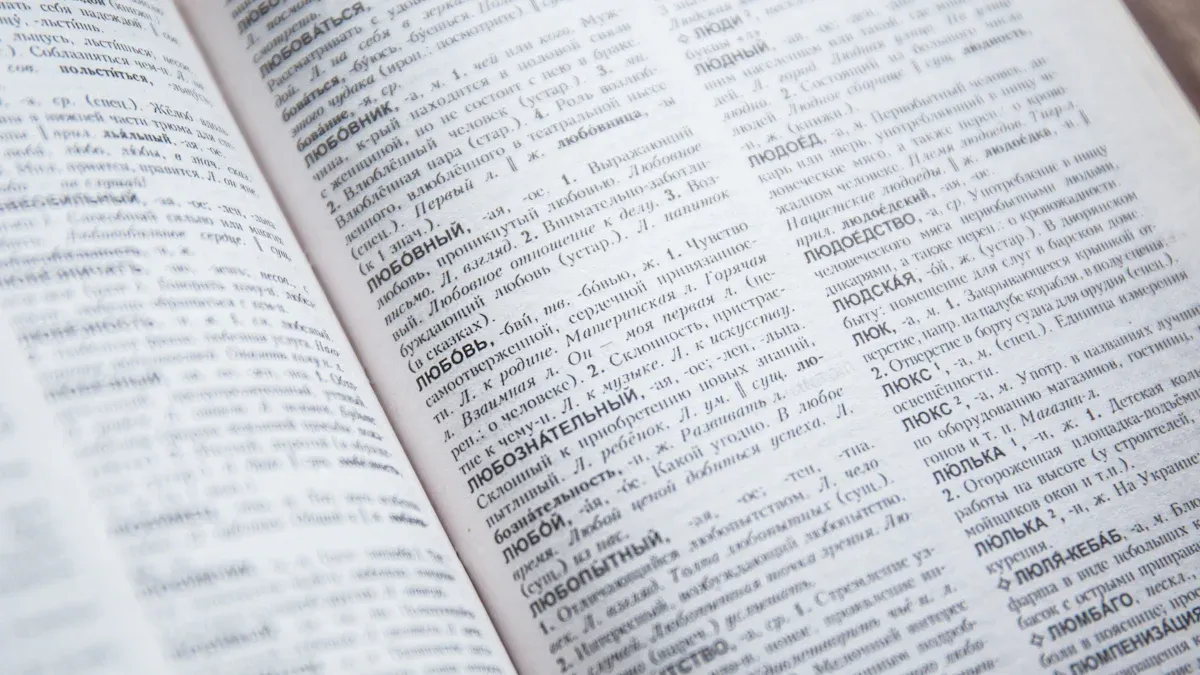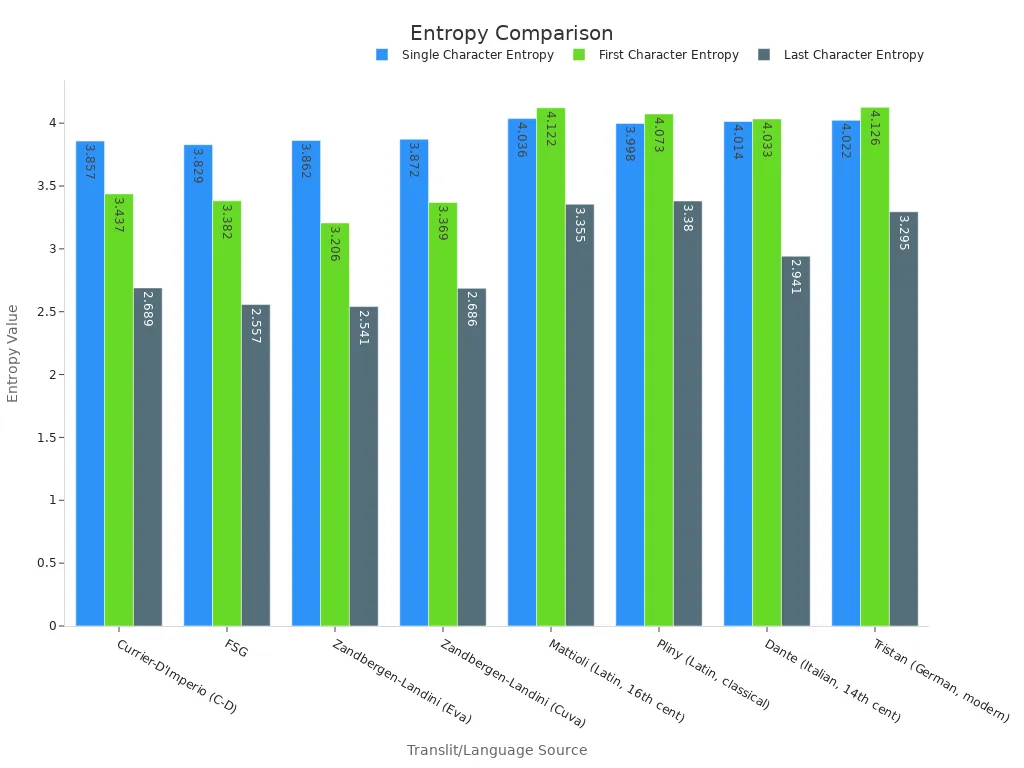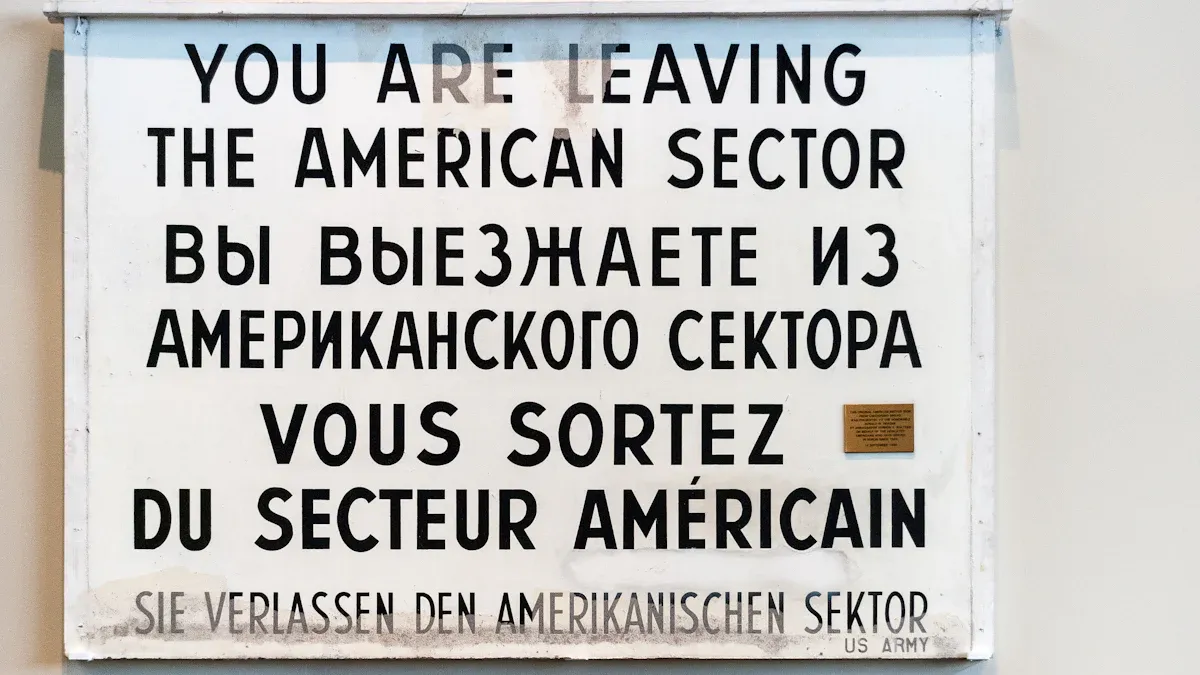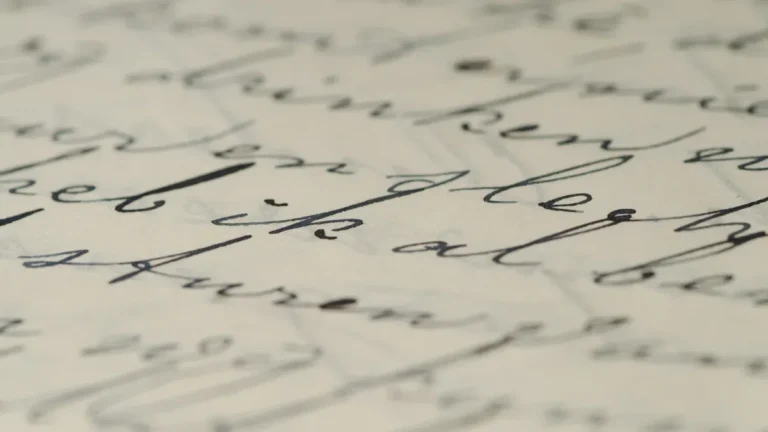
You may ask what makes transliteration vs transcription different. Transliteration changes words from one writing system to another, such as turning Cyrillic letters into Latin letters. On the other hand, transcription focuses on how a word sounds, using different letters or symbols to represent pronunciation. Romanization is a type of transliteration commonly used for languages like Japanese or Russian. When comparing transliteration vs transcription, the key difference lies in whether the focus is on the script or the sound. Romanization helps you read foreign words using an alphabet you are familiar with.
Key Takeaways
Transliteration changes words from one writing system to another. It keeps the original sound and look but uses a new script.
Transcription shows how words sound by writing their pronunciation. It uses special symbols like the International Phonetic Alphabet (IPA).
Romanization is a type of transliteration that uses Latin letters. It helps you read words from languages like Japanese, Russian, or Korean.
Use transliteration to read and write foreign words. You see it on signs, maps, or brand names. It is helpful when you do not know the original script.
Use transcription to learn correct pronunciation. It helps you improve speaking skills and understand language sounds better.
Translation changes the meaning of words into another language. It focuses on the message, not the letters or sounds.
Combining transliteration and transcription helps you read foreign words. It also helps you say them correctly and boosts your language learning.
Technology and AI tools now make transliteration and transcription faster. They are more accurate and help with language learning, travel, and communication.
Transliteration
Definition
Transliteration lets you switch text from one writing system to another. You do this by matching each letter or symbol to a new script. This helps keep the word’s sound close to the original. Translation changes meaning, but transliteration keeps how words look and sound. Linguists say transliteration works with graphemes. Graphemes are the smallest parts of writing that show sounds or meanings. Romanization is a special kind of transliteration. It changes scripts like Japanese, Korean, or Mandarin into Latin letters. There are many romanization systems. Some examples are Hepburn for Japanese, Pinyin for Mandarin, and ISO 9 for Cyrillic. These systems help you read and say foreign words even if you do not know the original script.
Process
Letter Mapping
When you use transliteration, you match each letter or symbol to a new script. This step-by-step way is called letter mapping. For example, in Japanese romanization, し becomes “shi” in Hepburn. In Mandarin romanization, 北京 becomes “Beijing” in Pinyin. Letter mapping helps keep the sound close to the original, even if the scripts look different.
Orthographic Transliteration
Orthographic transliteration does more than just letter mapping. It follows the spelling rules of the new language. This helps words look normal in the new script. For example, in Korean romanization, 한글 becomes “Hangeul” in the Revised Romanization system. Orthographic transliteration makes sure the new word fits the spelling style of the new language. Many romanization systems use this to help people read and write foreign words more easily. You will see orthographic transliteration in romanization for Japanese, Mandarin, and Korean.
Uses
Transliteration is used in many ways every day. You see it on travel signs, maps, and in public places. For example, when you visit a country with a different script, you can read place names in Latin letters. This helps you find places even if you cannot read the original script. Companies use transliteration to keep their brand names the same in other countries. General Electric uses transliteration in Japan to keep its brand name and sound. AI tools now help companies use transliteration to keep their brand voice the same everywhere. You also see transliteration in books, websites, and apps to help people learn new languages. Romanization examples show how transliteration makes foreign words easy to read and say.
Transcription
Definition
Transcription is when you change spoken words into written symbols. It helps you see how a word sounds. You can use transcription even if you do not know the language. In language studies, transcription lets people write down speech so others can read it. Researchers found that transcription lowers mistakes when understanding spoken words. They did tests with and without live transcription. The tests showed fewer errors when transcription was used. This means transcription helps people get spoken words right.
Types
There are two main types of transcription. Each type helps in different ways for learning and research.
Phonetic
Phonetic transcription shows every sound you hear in a word. You use special symbols for each sound. This helps you say words the right way. For example, “cat” is written as [kæt] in phonetic transcription. Researchers use deep learning and big sets of speech to make phonetic transcription better. They collect real speech and mark each sound. These steps help make phonetic transcriptions correct for many languages.
Phonemic
Phonemic transcription shows only the main sounds that change word meanings. You do not write every tiny sound, just the important ones. For example, “bat” and “pat” start with different sounds. Phonemic transcription shows these changes. You often see phonemic transcription in textbooks and dictionaries. It helps you learn which sounds matter most in a language.
Process
Transcription has clear steps. You listen to speech and write the sounds with symbols.
Sound Representation
First, you listen to the word. Then, you split it into smaller sounds. Each sound gets its own symbol. In phonetic transcription, you write every sound you hear. In phonemic transcription, you write only the main sounds. Researchers use special tools and big sets of speech to match sounds to symbols. They use forced alignment and deep learning to check each sound. These steps help make transcriptions correct for research and learning.
IPA System
The International Phonetic Alphabet (IPA) is the most used system for transcription. IPA gives you symbols for every sound in any language. You use IPA for both phonetic and phonemic transcription. For example, “think” is written as [θɪŋk] in IPA. Many speech recognition systems use IPA to turn speech into writing. These systems use models to match sounds to IPA symbols. You can use IPA to learn new languages, say words better, or study how people talk.
Tip: If you learn IPA symbols, you can read pronunciation guides in any language.
Uses
Transcription helps in many parts of language learning. It turns spoken words into written symbols. This lets you see how words sound. You can use transcription even if you do not know the language well.
Transcription is important for learning languages. It shows the exact sounds in each word. This helps you say words better and listen more carefully. Many teachers use transcription with the International Phonetic Alphabet (IPA). IPA helps students learn to say words the right way. When you use IPA, you notice the sounds in the language. This helps you sound more like a native speaker.
Note: If you say words well, you feel more sure when you talk. Others can also understand you more easily.
You will find transcription in dictionaries and textbooks. These books show IPA symbols next to words. This helps you know how to say new words. If you study for tests like TOEFL or IELTS, you will see that pronunciation matters for your score. Using transcription in your study plan can help you get a better score.
Transcription is not only for students. Linguists and researchers use it to study speech. They use phonetic and phonemic transcription to write down sounds from many languages. This helps them compare languages and see how sounds change over time.
Transcription is also used in technology. Speech recognition systems use it to turn speech into text. These systems help people who cannot hear well or need to type by speaking. Language learning apps use transcription to help you practice speaking and listening.
Here are some main benefits of using phonetic transcription in language learning:
You notice the sounds in the language.
Your pronunciation gets better and you feel more confident.
You listen and understand words more easily.
You can sound more like a native speaker.
You make fewer mistakes when saying words.
You do better on language tests.
Transcription helps you in many ways. It supports learning, using technology, and talking with others. When you use transcription, you can understand and speak better.
Transliteration vs Transcription
Key Differences
Transliteration and transcription are two ways to work with language. Transliteration changes each letter or symbol into a new script. The spelling stays close to the original word. This lets you read the word in a different alphabet. Romanization systems, like Hepburn for Japanese or Pinyin for Mandarin, help you read words from other alphabets.
Transcription is about how a word sounds. You write the pronunciation using special symbols. The International Phonetic Alphabet (IPA) is often used for this. Transcription shows you how to say a word, not just how to spell it.
The main difference is script versus sound. Transliteration helps you read and write in a new alphabet. Transcription helps you say words the right way. Romanization is a kind of transliteration that uses Latin letters for words from other scripts.
Tip: Use transliteration to read street signs in another country. Use transcription if you want to say a new word correctly.
Comparison Table
You can compare transliteration and transcription by looking at how they handle language. Researchers use tables to show these differences. The table below shows character entropy for different transliterations of the Voynich manuscript and for plain texts in several languages. Entropy tells you how much variety is in the text. Higher entropy means more different characters.
Text Type | Transliteration/Language | Number of Characters | Single Character Entropy | First Character Entropy | Last Character Entropy |
|---|---|---|---|---|---|
Voynich MS (part) | Currier-D’Imperio (C-D) | 66,587 | 3.857 | 3.437 | 2.689 |
Voynich MS | FSG | 142,770 | 3.829 | 3.382 | 2.557 |
Voynich MS | Zandbergen-Landini (Eva) | 188,862 | 3.862 | 3.206 | 2.541 |
Voynich MS | Zandbergen-Landini (Cuva) | 156,414 | 3.872 | 3.369 | 2.686 |
Plain Text | Mattioli (Latin, 16th cent) | 108,960 | 4.036 | 4.122 | 3.355 |
Plain Text | Pliny (Latin, classical) | 101,169 | 3.998 | 4.073 | 3.380 |
Plain Text | Dante (Italian, 14th cent) | 130,142 | 4.014 | 4.033 | 2.941 |
Plain Text | Tristan (German, modern) | 75,473 | 4.022 | 4.126 | 3.295 |
You can also see these differences in a chart. The chart below shows three entropy measures for different transliteration and transcription sources. This helps you see how much information each method keeps or changes.

When to Use Each
You pick transliteration or transcription based on what you need. If you want to read or write words from another script, use transliteration. Romanization systems turn scripts like Cyrillic, Japanese, or Korean into Latin letters. This is good for maps, signs, and brand names. Romanization also helps you type foreign words on a regular keyboard.
If you want to say a word the right way, use transcription. This method shows the exact sounds, so you can pronounce words like a native speaker. You see transcription in textbooks, dictionaries, and pronunciation guides. Teachers use it to help students learn new sounds.
Note: Transliteration helps you read and write. Transcription helps you listen and speak.
Sometimes you use both methods together. For example, you can use romanization to read a Japanese word. Then you use transcription to learn how to say it. This way, you get help with both reading and speaking.
Translation vs. Transliteration
Translation Defined
Translation means changing words from one language to another. It focuses on the meaning, not the letters or sounds. When you translate, you keep the message the same. The words may look different, but the idea stays. For example, “Good morning” in English becomes “Buenos días” in Spanish. The letters and sounds are not the same. The meaning is what matters in translation.
Scholars say translation connects languages and cultures. They use clear steps to study how translation works. Researchers check if translations keep the original meaning. They use data and numbers to do this. They look at things like making words simpler or changing them for culture. Some studies use special tools to compare translations. These methods help us see how translation changes or keeps meaning.
Translation lets people from different places understand each other. It helps share ideas across languages and cultures.
Main Differences
You may wonder how translation and transliteration are not the same. The main difference is what each one changes. Translation changes the meaning into a new language. Transliteration changes the script but keeps the sound and look close.
Here is a simple table to show the differences:
Feature | Translation | Transliteration |
|---|---|---|
Focus | Meaning | Script/letters |
Output | New words in target language | Same word in new script |
Example | “Hello” → “Bonjour” (French) | “Москва” → “Moskva” (Latin) |
Use | Books, movies, conversations | Maps, signs, brand names |
Changes | Words and grammar | Letters and spelling |
You use translation to help others understand the message. You use transliteration to help others read or say words from another script. Translation vs. transliteration comes up when people use different languages or scripts.
When to Use
You pick translation or transliteration based on your goal. Use translation if you want to share the meaning. Use transliteration if you want to show how a word looks or sounds in a new script.
Researchers say you should think about culture, timing, and your purpose. If you work with teams from other countries, translation helps everyone understand. If you need to keep names or places the same, transliteration is better.
Here are some tips to help you choose:
Use translation when you need to:
Share ideas or information in another language.
Write books, articles, or instructions for new readers.
Make sure the meaning is clear and correct.
Use transliteration when you need to:
Show names, places, or brands in a new script.
Help people read or say foreign words.
Keep the original sound or look of a word.
Researchers also say to think about culture, timing, and translator skills. Early translation can save time and keep ideas clear. Late translation may give deeper meaning but takes more work. Teams often keep notes about their translation choices to stay clear and fair.
Aspect | What to Consider | Example or Note |
|---|---|---|
Cultural Responsiveness | Respect local customs and avoid bias | Choose words that fit the culture |
Timing | Translate early for clarity, late for depth | |
Translator Role | Use skilled translators for best results | Impartial and culturally aware |
Methodology | Match translation to your research or project | Use the right approach for your needs |
Practical Needs | Think about your team’s skills and resources |
Transliteration vs translation is not just about language. It is about your goal, your audience, and the situation. When you know the difference, you can pick the best way for your needs.
Examples

Transliteration
Transliteration helps you read words from another alphabet. It matches letters from one script to a new one. Here are some examples that show how words change scripts:
Original Script | Original Word | Transliteration | System Used |
|---|---|---|---|
Greek | Αθήνα | Athína | ISO 843 |
Russian | Москва | Moskva | ISO 9 |
Japanese | さくら | sakura | Hepburn Romanization |
Korean | 한글 | Hangeul | Revised Romanization |
Arabic | محمد | Muhammad | ALA-LC |
Romanization is a type of transliteration. It shows Japanese, Korean, or Russian words in Latin letters. Romanization helps you read signs, maps, and brands when you travel. For example, the Japanese city 東京 is written as “Tokyo” in romanization. These examples show you can read and say foreign words even if you do not know the original script.
Tip: Romanization makes it easier to type or search for foreign words online.
Transcription
Transcription shows how to say words by writing their sounds. You use special symbols, like those from the International Phonetic Alphabet (IPA), to show the exact way to say each word. Here are some examples:
Word | IPA Transcription (American English) | IPA Transcription (British English) |
|---|---|---|
technology | /tɛkˈnɑːlədʒi/ | /tɛkˈnɒlədʒi/ |
water | /ˈwɔːtər/ | /ˈwɔːtə/ |
cat | /kæt/ | /kæt/ |
IPA symbols break each word into its sounds. For example, “technology” as /tɛkˈnɑːlədʒi/ shows every sound you need. IPA also shows differences between American and British English. Linguists use tools like spectrograms and tongue pictures to check that IPA matches real speech. This makes IPA a good way to learn how to say words.
Here is a table that shows the difference between broad and narrow transcription:
Word | Broad Transcription | Narrow Transcription |
|---|---|---|
pat | /pæt/ | [pʰæt] |
bet | /bɛt/ | [bɛt̚] |
sit | /sɪt/ | [sɪt̚] |
Broad transcription gives you the main sounds. Narrow transcription adds more detail, like small changes in how you say the word.
Translation
Translation changes words from one language to another. You use translation to share ideas, stories, or facts with people who speak a different language. Here are some examples:
Original Language | Original Phrase | Translation (English) | Notes |
|---|---|---|---|
Spanish | Buenos días | Good morning | Keeps the same meaning |
French | Comment ça va ? | How are you? | Matches the greeting style |
Chinese | 谢谢 | Thank you | Shows politeness |
Russian | Как дела? | How are you? | Similar to English greeting |
Japanese | いただきます | Let’s eat / Bon appétit | Cultural phrase, not literal |
Translation works best when you know the meaning, culture, and situation.
You need to be careful with idioms, like “kick the bucket,” so you do not translate them word for word.
You must pick the right meaning for words with more than one sense, like “bat” (animal or sports equipment).
Good translation keeps the message clear and easy for the reader.
Note: Translation helps you connect with people from other cultures by sharing ideas in a way that makes sense to them.
Real-World Applications
Language Learning
You can get better at languages by using transcription and romanization together. Many apps show you how to say words and write them in a script you know. For example, the ATAIGI app uses AI to give you romanized words, audio, and clear examples. This helps you match spoken and written words. You see the word, listen to it, and read its romanization. This makes it easier to understand and remember new words. If you learn Korean, romanization lets you read and say words even if you do not know Hangul. You also find romanization in textbooks and online classes for different languages. These tools help you learn faster and make studying more fun. You feel more sure of yourself as you practice with real examples.
Tip: Try reading both the original script and the romanized version. This helps you link sounds to letters.
Travel and Communication
When you travel, you often see romanization on signs, maps, and menus. This makes it easier to get around in places with different scripts. For example, Korean romanization helps you read subway stops in Seoul. You can ask for directions or order food without knowing the local alphabet. Romanization also helps you type foreign words on your phone or computer. You can search for places, send messages, or use translation apps. These tools use romanization to help you talk with people. You avoid confusion and feel more at ease in new places.
Here are some common uses:
Reading maps and signs in unfamiliar scripts
Ordering food or asking for help
Typing foreign names or addresses into apps
Note: Romanization bridges the gap between languages and helps you connect with people during your travels.
Technology
Technology has changed how you use transcription and romanization. AI-powered systems now give you fast and accurate results. You can use speech recognition to turn spoken words into text. These systems use smart models that understand accents, feelings, and even sayings. For example:
AI systems learn your voice and get better over time.
Quantum computers make transcription faster and more correct.
AI helpers can help you with saying and spelling words.
Good tips include using clear audio and updating AI often.
Modern apps use these features to help you learn, work, and travel. You get quick feedback and help. You save time and make fewer mistakes. Technology also makes romanization and transcription easier for everyone.
Benefit | Challenge |
|---|---|
Fast and accurate | May need good internet |
Easy to use | Some errors with accents |
Supports many languages | Not all scripts covered |
You can trust these tools to help you get better and make daily life easier. As technology grows, you will see even more support for romanization and transcription in your favorite apps.
You have learned how transliteration, transcription, and translation are not the same. Transliteration lets you change words into a new script. Transcription helps you see how to say words. Translation tells you what words mean. Pick the method that matches what you want to do. Look at the tables and examples in this post if you need help choosing.
Remember: Using the right method makes it easier to read, talk, and understand new languages. You will feel more confident.
FAQ
What is the main goal of transliteration?
Transliteration lets you change words into a new alphabet. You can read or write words in another script. The meaning does not change, but the letters look different.
How does transcription help with pronunciation?
Transcription uses special symbols to show how words sound. You see each sound clearly. This helps you say new words the right way, even if you do not know the language.
Can you use transliteration and transcription together?
Yes! You can read a word with transliteration. Then you check its transcription to learn how to say it. This way, you can read and speak foreign words with more confidence.
Why do maps and signs use transliteration?
Maps and signs use transliteration so you can read place names in your own alphabet. This makes traveling easier. You can find places even if you cannot read the local script.
What is the difference between phonetic and phonemic transcription?
Type | What it shows | Example for “cat” |
|---|---|---|
Phonetic | Every sound you hear | [kʰæt] |
Phonemic | Only important sounds | /kæt/ |
Phonetic transcription gives more details. Phonemic transcription keeps things simple.
Does translation always change the script?
No. Translation changes the meaning into another language. The script might stay the same or change. It depends on the languages. Transliteration only changes the script, not the meaning.
Is romanization the same as transliteration?
Romanization is a kind of transliteration. You use it to write words from scripts like Japanese or Russian in Latin letters. Romanization helps you read and type foreign words more easily.
How can learning IPA help you?
If you learn IPA symbols, you can read pronunciation guides for any language. You can say new words the right way and get better at speaking. This helps you sound more natural when you talk.
See Also
Top Innovative Methods To Utilize AI Transcription Effectively
How To Convert MP3 Files Into Accurate Text Transcripts
Transform Audio Into Text Easily Using Transcript.lol Platform
Convert Voice Recordings To Text With AudioNotes.ai And TurboScribe





